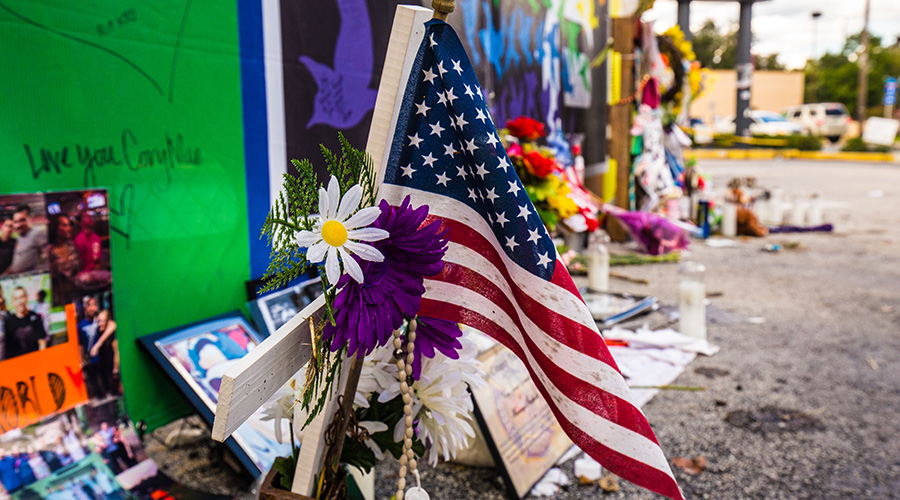Augusta Community Embraces NFPA 3000/ASHER Program
Georgia city adopts NFPA 3000 standard for dealing with active shooter situations.
By Dave Lubach, Executive Editor
Parkland. Columbine. Sandy Hook. Uvalde. The list of sites of a mass shooting event is too long to read, given all the towns, schools, healthcare facilities, churches and other facilities forever linked by one tragic event.
One city not on that list is Augusta, the Georgia city of 200,000 best-known as the home of the Masters golf tournament, and city leaders are determined to keep it that way.
In 2018, Augusta became the first U.S. community to implement National Fire Protection Association (NFPA) 3000, the standard known as the Active Shooter/Hostile Event Response (ASHER) program that addresses mass casualty event mitigation, planning, response and recovery.
Strong Augusta is a nonprofit organization founded by Augusta University’s critical event preparedness and response team, along with local stakeholders that include police and fire departments, schools, universities, healthcare facilities, municipalities and businesses to organize a unified local preparation and response plan for hostile events, such as mass shootings and bombings.
NFPA 3000 was an important response to a critical question.
“For years collectively as a society, after every one of these events, we were saying, ‘Is somebody going to do something? When are we going to do something?’” says John Ryan, emergency manager at Augusta University and a founder of Strong Augusta.
In June 2016, following one of the deadliest mass shootings on record, one official began the process to end the trend.
“It’s not a matter of if one is going to happen. It’s when,” Ryan said during a presentation about Strong Augusta at NFPA’s conference this year. Ryan will lead an education session at NFMT Baltimore in March on active shooter prevention planning for facility managers.
Pulse ‘pivotal moment’
In June 2016, the Pulse Nightclub shooting in Orlando killed 49 people and injured 53. It remains the second-deadliest mass shooting in U.S. history, and Ryan says that shooting was the “straw that broke the camel’s back” and inspired the creation of NFPA 3000.
Orange County’s fire chief at the time, Otto Drozd, was one of the first responders to The Pulse, and he was not satisfied with the response.
“After living through that event, he had an idea that there needed to be a single go-to response documented for all responders,” says Bob Duval, the NFPA’s Northeast regional director based in Massachusetts. “Fire, police, EMS, community-based healthcare, everyone not at the tactical level but at the 30,000-foot level — everyone needs to be on the same song sheet when responding to these incidents because they’re so dynamic.”
As details surrounding The Pulse shooting emerged, flaws in the response inspired leaders like Drozd to study ways to improve the process so first responders and other stakeholders could improve responses to future events.
“There were issues with communications, nomenclature, issues with just getting the right people in the right places to make notifications,” Duval says. “With the nature of these incidents occurring, they decided to put the standard on what’s called a provisional standard track.”
The NFPA Standards Council released the first version of the standard in 2018, squeezing three years of the normal process into a two-year provisional window to reflect the urgency of the mass shooting problem. Updated versions of NFPA 3000 were released in 2021 and again this year.
“They’ve made updated standards based on proposals and comments from the public, people that are interested in this standard,” Duval says. “Anyone can participate, but most of these folks are first responders, government officials and healthcare and mental and psychological professionals, educators and such. The standard gets a little better every time it comes out. Things change from previous editions due to technology or new studies or research.”
An active shooter event might not seem to relate to an organization like NFPA, which is known for developing fire safety standards in facilities. But Duval says that the increasing number of mass shootings called for additional action and designing training programs for all members of the community for the ASHER Program.
“There have been one-off mass shooting incidents since the University of Texas tower incident in the 1960s, but they’ve become more and more frequent unfortunately, and responders were at a bit of a loss,” he says. “Responders would all go to this call but couldn’t talk to each other because the fire department was using nomenclature that the law enforcement didn’t use, and vice versa.
“What the standard did is take all our stakeholders and law enforcement and brought them all into the same standard and said, ‘We can do this. We just need to educate one another and then we need to train on this.’ We just can’t read the book, put it on the shelf and say we’re good go to.”
Impact on Augusta
Ryan was attending an emergency management conference in 2018 as the standard was being developed when Augusta was asked to be the first municipality in the country to adopt NFPA 3000.
Ryan received immediate interest from other community leaders. He was joined by his colleague, Joe Webber, Augusta University’s director of office and critical events, preparedness and response in emergency management. The Augusta complex also includes a healthcare side with a Tier 1 research center, medical college and trauma and cancer centers.
Also joining was a local representative from the FBI and the local fire chief. Involved entities have expanded beyond the city to community partners in outlying areas of Augusta and throughout the county.
“Prior to 2018 when this standard was published, the good idea fairy had been everywhere,” Ryan says. “Everybody was doing something as it relates to active shooter, but we all weren’t doing the same stuff, and there had been no vetting process testing if any portions of society were doing the right stuff. In 2018, we washed away all those and said this is the consensus standard that goes across all sectors of society and the emergency management cycles.”
Strong Augusta’s efforts to educate the public on ASHER stalled during the COVID-19 pandemic in 2020, but they re-started in 2022 and quickly built momentum. During one information session, about 200 people showed up to learn about ASHER. As word spread about Strong Augusta, the organizers found increased buy-in from all walks of the community.
“We got the media involved, so instead of 50 people involved, there are thousands of people in the area that are aware of what Strong Augusta is,” says Brian Ozden, the FBI’s assistant special agent in Atlanta. “Once you present to one group, they ask you to come to their organization and speak.”
Facilities impact
While the Augusta area is embracing the ASHER program, Duval says he wishes the momentum would spread into more communities nationwide.
“I’m pleased with the folks that have done it, but then I’m a little impatient that it’s not taking hold a little quicker,” he says. “I wish I could snap my fingers and say it’s all right from Maine to California, and everyone is instantly going to be on the same page, but every state has different dynamics.”
Still, there are signs that communities — and leaders at institutional and commercial facilities in particular — are buying in.
Augusta University is trying to jumpstart the process. Duval says there is a facilities-related push to get entities on board in Massachusetts.
“We have a facility in my jurisdiction that’s rather large, and they came to the police and fire and the town government saying they wanted to hold an active shooter drill at their facility,” Duval says. “The fire chief said it was a great idea, and they got the players together and had drills.
“The chief asked why all of the sudden they wanted training, and apparently one of their other facilities on the other side of the country had an active shooter event, and the corporate folks said that the company has to plan for something at all of their facilities, whether it’s in this state or across the country.”
It is those kinds of stories that ASHER program supporters are longing to hear before it is too late.
“Sometimes, it takes a terrible thing to happen before they realize it can happen, and then others are like, ‘I don’t want that to happen to us,’” Duval says. “From the Pulse Nightclub shooting or the Boston Marathon bombing, those were incidents that triggered people to do something before it’s too late.”
Dave Lubach is executive editor of the facility market. He has more than nine years of experience writing about facility management and maintenance issues.
Related Topics:












